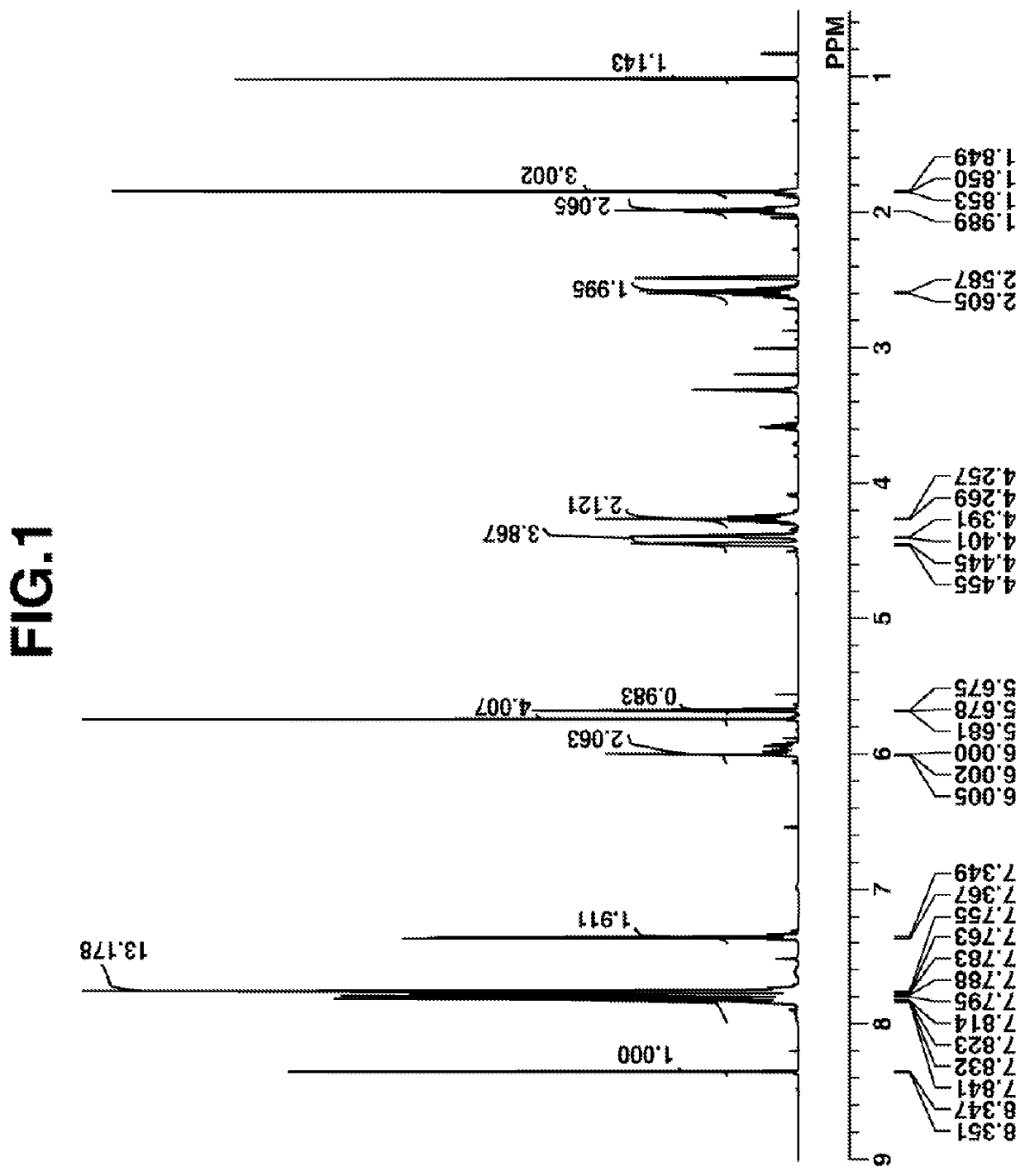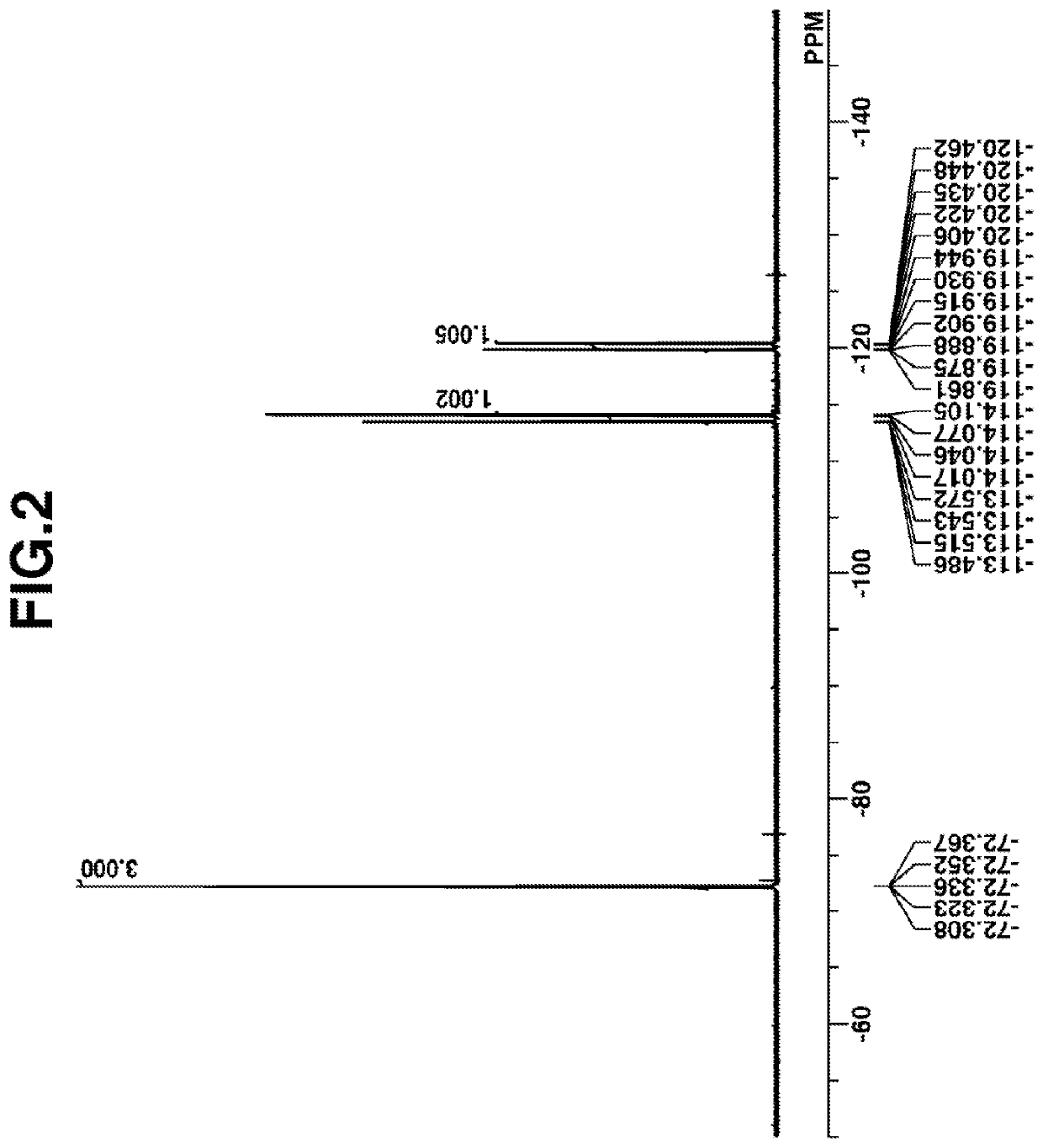Sulfonium salt, polymer, resist composition, and patterning process
a technology of resist composition and sulfonium salt, which is applied in the field of sulfonium salt, a polymer, and a resist composition. it can solve the problems of reducing the resolution and focus margin of hole and trench patterns, affecting the quality of resist composition, and becoming a serious problem. achieve the effect of satisfying the profile, improving cdu, and improving lwr
- Summary
- Abstract
- Description
- Claims
- Application Information
AI Technical Summary
Benefits of technology
Problems solved by technology
Method used
Image
Examples
example 1-1
[0183]Synthesis of PAG Intermediate 1
[0184]
[0185]A mixture of 250 g of (4-tert-butyloxyphenyl)diphenylsulfonium p-toluenesulfonate, 5 g of p-toluenesulfonic acid monohydrate, and 750 g of methanol was stirred at 80° C. for 5 hours. The reaction solution was cooled down to room temperature and concentrated under reduced pressure. To the concentrate were added 1,000 g of methylene chloride and 500 g of deionized water. An organic layer was taken out, washed with water, and concentrated under reduced pressure. MIBK 1,000 g, was added to the residue, which was concentrated under reduced pressure again. There was obtained 240 g of the end compound, PAG Intermediate 1 as oily matter (yield 96%).
example 1-2
[0186]Synthesis of PAG Intermediate 2
[0187]
[0188]A mixture of 140 g of PAG Intermediate 1, 97 g of 2-methanesulfonyloxyethyl methacrylate, 42 g of potassium carbonate, 2 g of sodium iodide, 60 g of methylene chloride, and 700 g, of dimethylformanaide was stirred at 80° C. for 3 hours. The reaction solution was combined with 10 wt % sodium chloride aqueous solution and washed with 600 g of n-hexane. After washing, 300 g of methylene chloride was added to the water layer, from which an organic layer was extracted. The organic layer was washed with water and concentrated under reduced pressure. The residue was washed with diisopropyl ether, combined with 1,000 g of MIBK, and concentrated under reduced pressure again. There was obtained 240 g of the end compound, PAG Intermediate 2 as oily matter (yield 68%).
example 1-3
[0189]Synthesis of PAG Intermediate 3
[0190]
[0191]Under ice cooling, 19 g of pyridine was added to a mixture of 75 g of benzyltrimethylammonium 2-hydroxy-1,1,3,3,3-pentafluoropropane-1-sulfonate (as synthesized according to the method described in JP-A 2016-218089 or US 20160334706), 31 g of 4-chlorobutyric acid chloride, 380 g of methylene chloride. The solution was heated at room temperature and stirred for 20 hours. Dilute hydrochloric acid was added to the reaction solution to quench the reaction. An organic layer was taken out and washed with water, combined with 200 g of MIBK, and concentrated under reduced pressure. To the residue was added 300 g of diisopropyl ether. The thus precipitated crystal was recovered and dried in vacuum by heating. There was obtained 87 g of the end compound, PAG Intermediate 3 as white solid (yield 90%).
PUM
| Property | Measurement | Unit |
|---|---|---|
| refractive index | aaaaa | aaaaa |
| dispersity | aaaaa | aaaaa |
| temperature | aaaaa | aaaaa |
Abstract
Description
Claims
Application Information
 Login to View More
Login to View More - R&D
- Intellectual Property
- Life Sciences
- Materials
- Tech Scout
- Unparalleled Data Quality
- Higher Quality Content
- 60% Fewer Hallucinations
Browse by: Latest US Patents, China's latest patents, Technical Efficacy Thesaurus, Application Domain, Technology Topic, Popular Technical Reports.
© 2025 PatSnap. All rights reserved.Legal|Privacy policy|Modern Slavery Act Transparency Statement|Sitemap|About US| Contact US: help@patsnap.com



